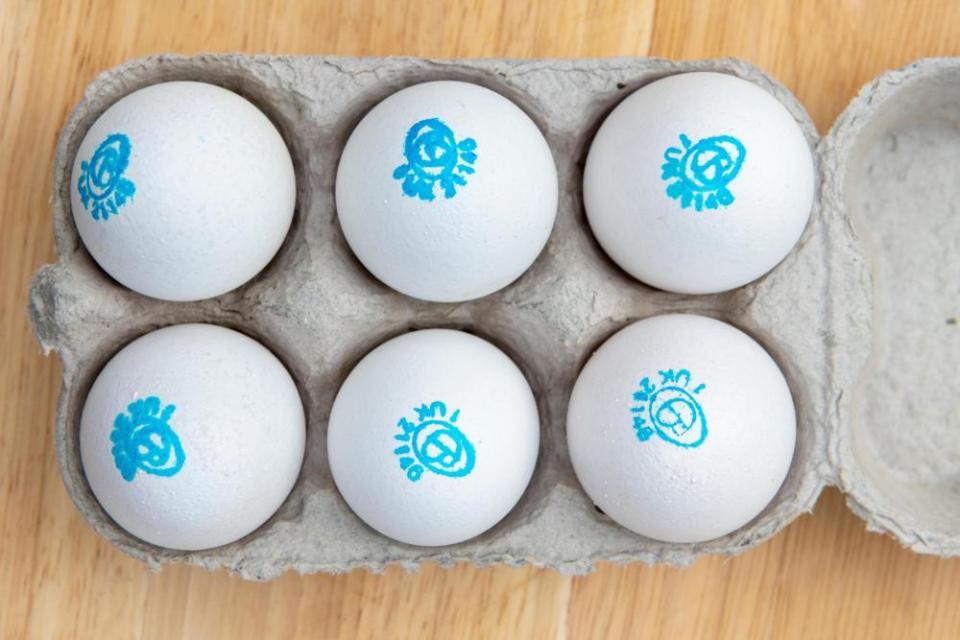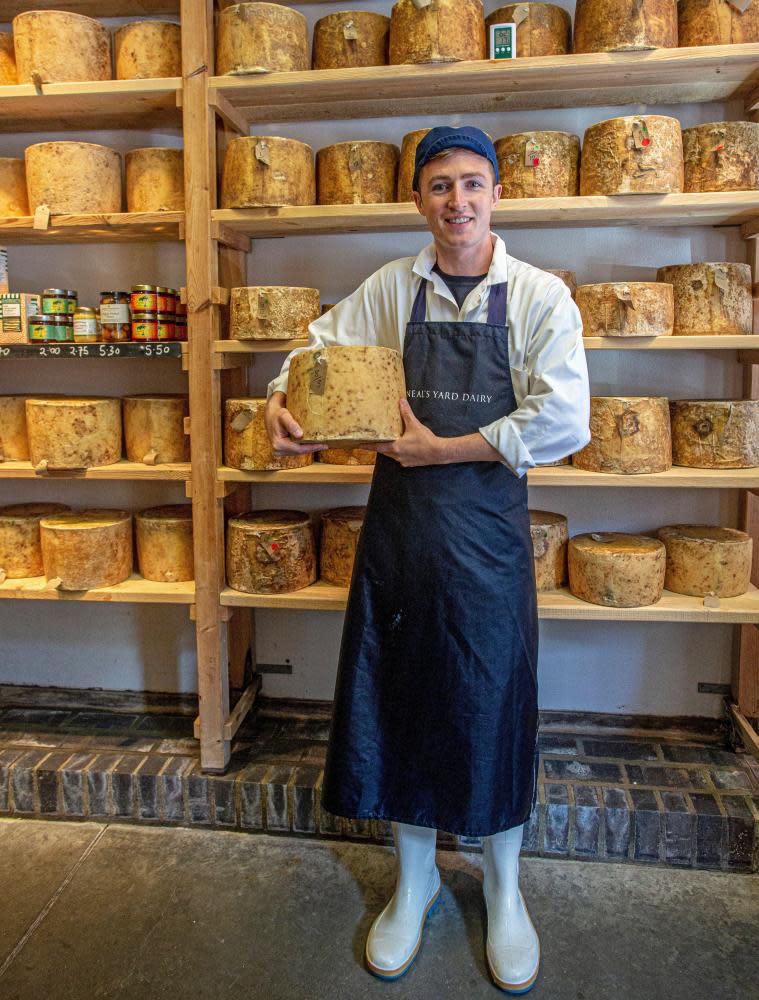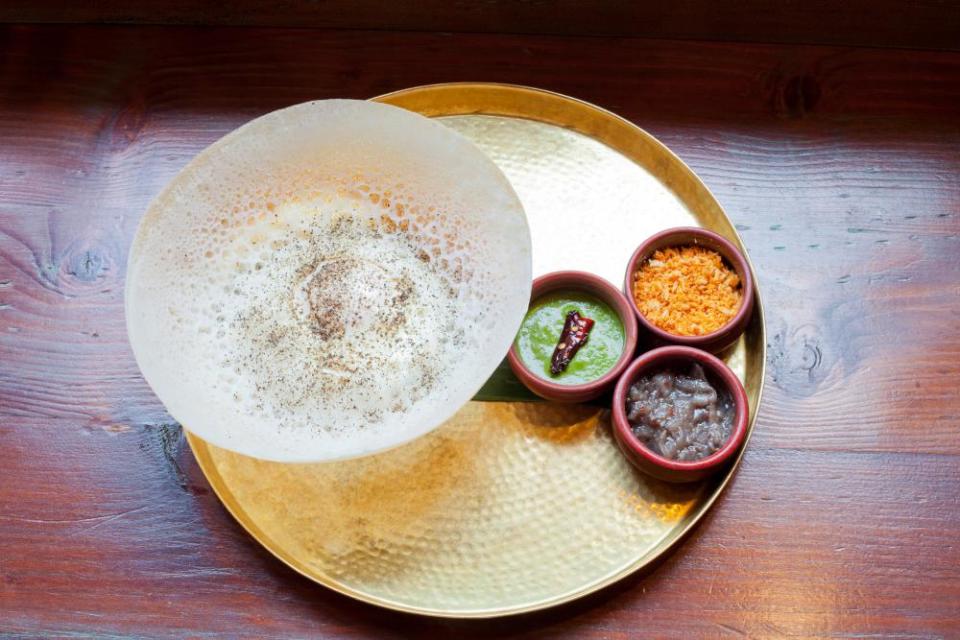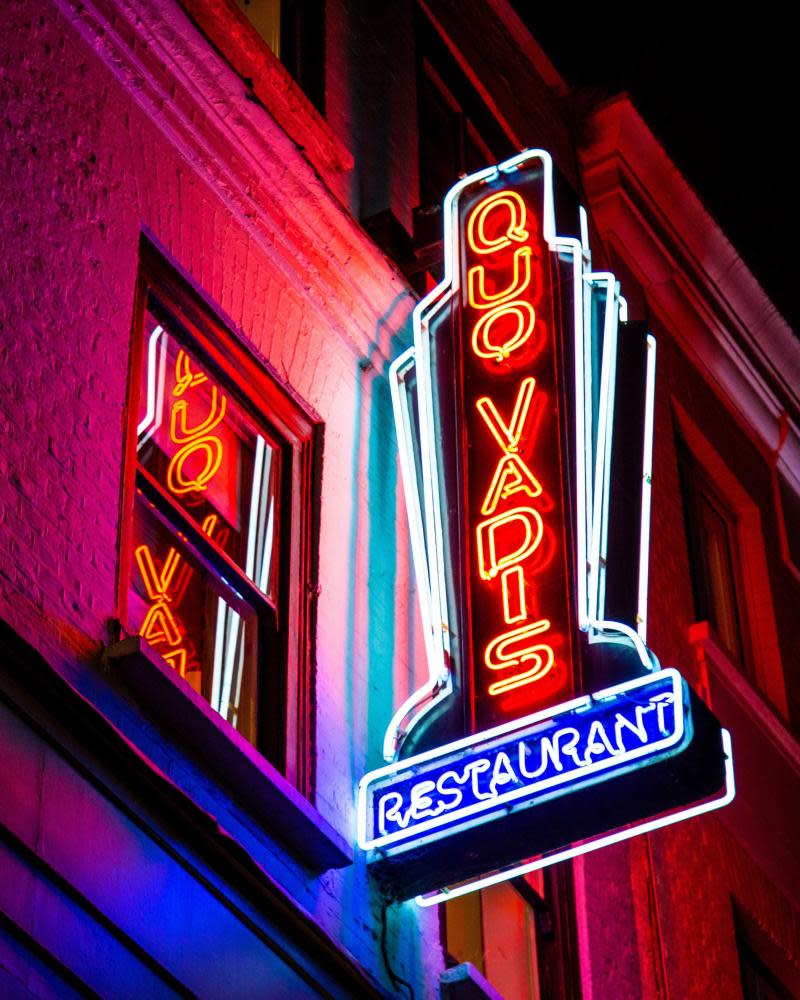‘Candy bars in America are not proper chocolate’: Top Chef judge Gail Simmons on US v UK food
“London is a food gateway,” says Gail Simmons. “It’s a multicultural city like nowhere else in Europe, with its own food traditions, but really, from a food perspective, it’s a story of immigration.”
Now in its 20th season, shot in London with a global cast of previous winners, Top Chef is the most famous competitive cookery show you’ve never heard of – if you’re a British reader. Not only is it the No 1 food show on cable in the US – the previous series had 7.3 million viewers – but the format has been exported to 29 countries, although not yet to the UK, perhaps because we have our own blockbuster shows: MasterChef, Great British Menu and, of course, Bake Off.
The premise is simple. In each episode, “cheftestants” create themed dishes to impress the judges: Simmons; the restaurant chef Tom Colicchio; and the model turned cookery writer Padma Lakshmi. Over the course of the series, they are whittled down to a group of finalists who compete for the show’s eponymous title. Against Colicchio’s technical insights and Lakshmi’s coolly delivered conclusions, the chef-trained journalist Simmons brings the warmth: her feedback taps into how a dish made her feel. She is the one you would want to have over for dinner.
From picnics at Highclere Castle (the location for Downton Abbey) to an episode dedicated entirely to wellingtons – beef or otherwise – the new series does the rounds of quintessentially British dishes and places (as a US audience would have it, at least). Glossy and glamorous, this is distinctly American food TV. Ready Steady Cook this is not.
During the eight weeks of filming, Simmons lived in a flat in London with her family. She eats so much of the food prepared on the show, she says, that home-cooked food is a must on days off: “Doing my own grocery shopping and cooking was the most eye-opening way of really experiencing London’s food scene.” Here are the ingredients, dishes and experiences that made the biggest impact on her.
Eggs

“The cost of daily food items felt much more affordable in the UK, even when you take the cost of living crisis into consideration. My go-to benchmark is a box of eggs. In the States, they’re about $8 to $9 (£6 to £7) a dozen, which is crazy. And not only were they more accessible, but they tasted better. I’m an egg obsessive, and I found British eggs to be the eggiest, farmiest, most delicious eggs I’ve had.
“Before I arrived to shoot Top Chef in London, a friend told me about the Cacklebean brand – special-occasion eggs, for sure, but they were so beautiful, with their little white shells and luminous yolks.”
Cheese

“Brits love cheese. I love their cheese. Even at regular grocery-store level, the quality is amazing and there’s so much variety; while we were there, we’d get smoked cheddar from the cornershop, which my kids loved. And then there are specialist cheesemongers like Neal’s Yard, an explosive and beautiful world of flavour owing to a rich, historic dairy tradition.
“Cheese in America can be very extreme: on the one hand, really good cheese from an expensive speciality store; or supermarket cheese – the Krafts and monterey jacks of this world – with very little in between. It can be hard to find great, flavourful stuff on a budget. Our pasteurisation laws are very strict – and with that you lose flavour.”
Chocolate
“Everybody knows, but I’m here to tell you: candy bars in America are not proper chocolate. I’ve said it once and I’ll say it again: grocery-store-level foods are just better in the UK. I grew up in Canada and, as a part of the Commonwealth, we had a lot of stuff from England. I didn’t realise how much I’d missed it over the past 25 years of living in New York until I came to shoot in London.
“Tom [Colicchio] and I got really into it – we did a video about the chocolate bars available at Tesco – I’ve never seen more passionate responses on social media. Cadbury in general really hits the spot for me – a simple Button or a Crunchie, which, hands down, no contest, is my favourite chocolate bar of all time. I dressed up as a Crunchie for Halloween when I was 10.”
Fig leaves
“They were on almost every menu in almost every London restaurant we ate in (Planque, Sessions Arts Club, Lyle’s, Rochelle Canteen, Portland): in ice-creams, custards, pies, syrups, cocktails, on one occasion wrapping fish, steeped in oils.
“I always descend on figs when they arrive in New York in September, but using their leaves in cooking was new to me; they have an intoxicating flavour. If you don’t add sweetness, they can bring something savoury, herbaceous and aromatic to dishes; that was a revelation to me.”
Pies
“I spent my London summer eating pies, which is probably not the season to do it, but I’ll eat a meat pie wherever, whenever, any which way you give it to me. Shepherd’s, cottage, fisherman’s, steak and kidney – so comforting, so delicious.
“Savoury pies are not a thing in the same way in America. We have quiche, we have tarts, we have chicken pot pie, where a layer of pastry is thrown over a chickeny, stewy thing, but in the US a pie is still a fruity dessert. British pie culture needs to cross the pond.”
Sri Lankan food

“We all know that the UK has great Indian food, but I was bowled over by the incredible Sri Lankan food in London now – Hoppers, Kolamba, Paradise. The flavours of curry leaf, coriander, coconut and chillies infused into tender meat and delicate vegetables were intoxicating, not to mention the always delicious edible vehicles – roti, hoppers, fragrant rice dishes. I kept going back for more.
“With forward, boisterous flavours and often at accessible prices, it felt refreshingly mainstream. I particularly loved the fish kari, curry leaf peanuts and spiced lamb kothu roti at Hoppers.”
Service
“I appreciated the straightforwardness of British restaurant service. Across the board, from casual to upscale places, we’d simply be asked if we had any questions about the menu. I experienced very little of the pretentious overexplanation that you often find in American restaurants; I wonder whether this has something to do with the economics of hospitality. I generalise, but, overall, a British waiter earns a living wage and isn’t reliant on tips that are earned by proving themselves to diners. I found this made for a calmer experience.
“I did, however, question myself every time I got up to leave dinner – had I left enough tip? What was the right thing to do? I’ve been very conditioned by the American 20%.”
Members’ clubs

“I am split about private clubs, which are a distinctly British thing. I see the appeal of having somewhere to take guests, a home away from home where you feel known and can drink into the night. I went to Quo Vadis and loved it.
“But clubs also emphasise the line between those who can and can’t afford to pay for a membership. The elitism of it was quite foreign to me.”
The Sunday roast
“An institution that makes perfect sense: a family day fuelled by roast meat, trimmings and sides. I can never resist a buttery yorkshire pudding cradling rich gravy. It feels comforting but decadent, indulgent but unfussy.
“In the US, we have brunch, and Italian-Americans have “Sunday gravy” – or spaghetti and meatballs, where the meaty tomato sauce has been simmering on the stove all afternoon – but neither are as universal or inclusive as British roasts. We wouldn’t take our kids to pubs in America, but I loved seeing mine saddled up at a bar, ordering pints (not for themselves, I hasten to add). I want to spend every Sunday this way.
“The best I had were at the Hero in Maida Vale (shout out to the leek gratin!) and the Bull & Last in Highgate.”
Food halls
“This is a phenomenon you can see in a lot of western cities, especially ones where rents are expensive: big, indoor emporiums full of small food businesses who might otherwise not be able to afford bricks and mortar – craft breweries, little bakeries, street food. They are great for fostering entrepreneurship and London does them really well: Arcade at Centre Point, Seven Dials market in Covent Garden, Mercato Mayfair, to name a few.
“I was particularly struck by Plaza Khao Gaeng at Arcade; I remember a miang of coconut and cashews with palm sugar, chicken curry with betel leaves, and tiger prawns with sator beans and shrimp paste. Their sautéed morning glory with chillies and fermented soya beans was simple, but boldly seasoned, and didn’t disappoint.”
• Stream Top Chef on Hayu, with new episodes every Friday

 Yahoo News
Yahoo News 
